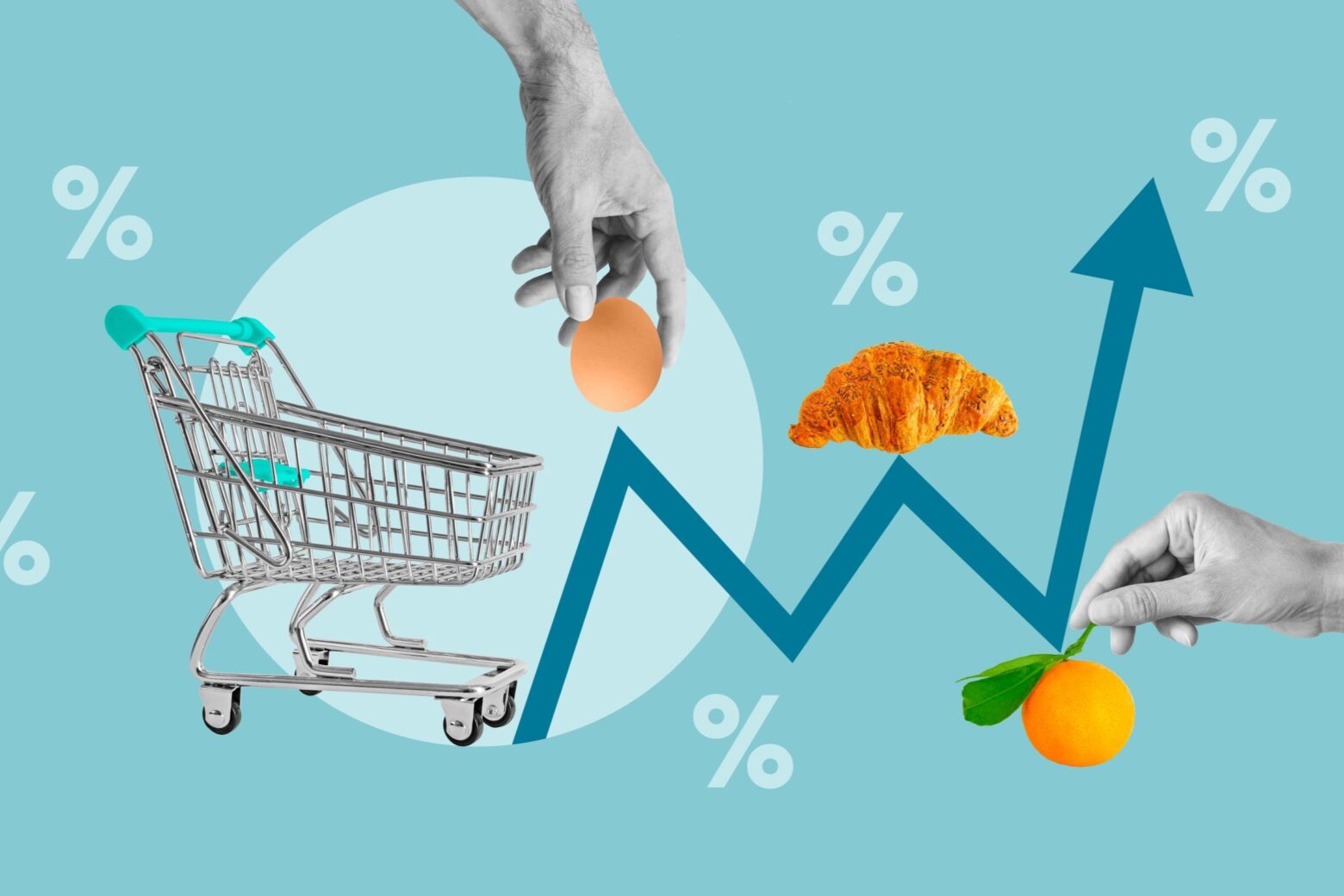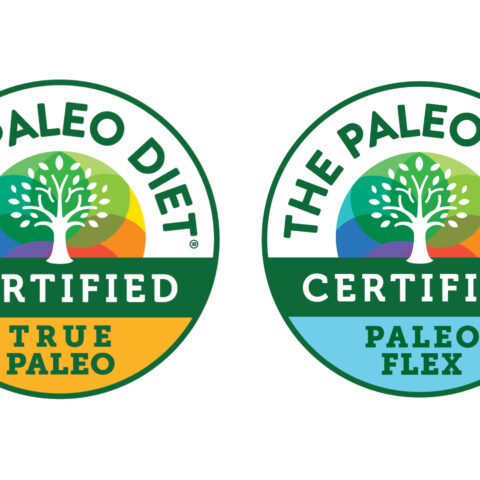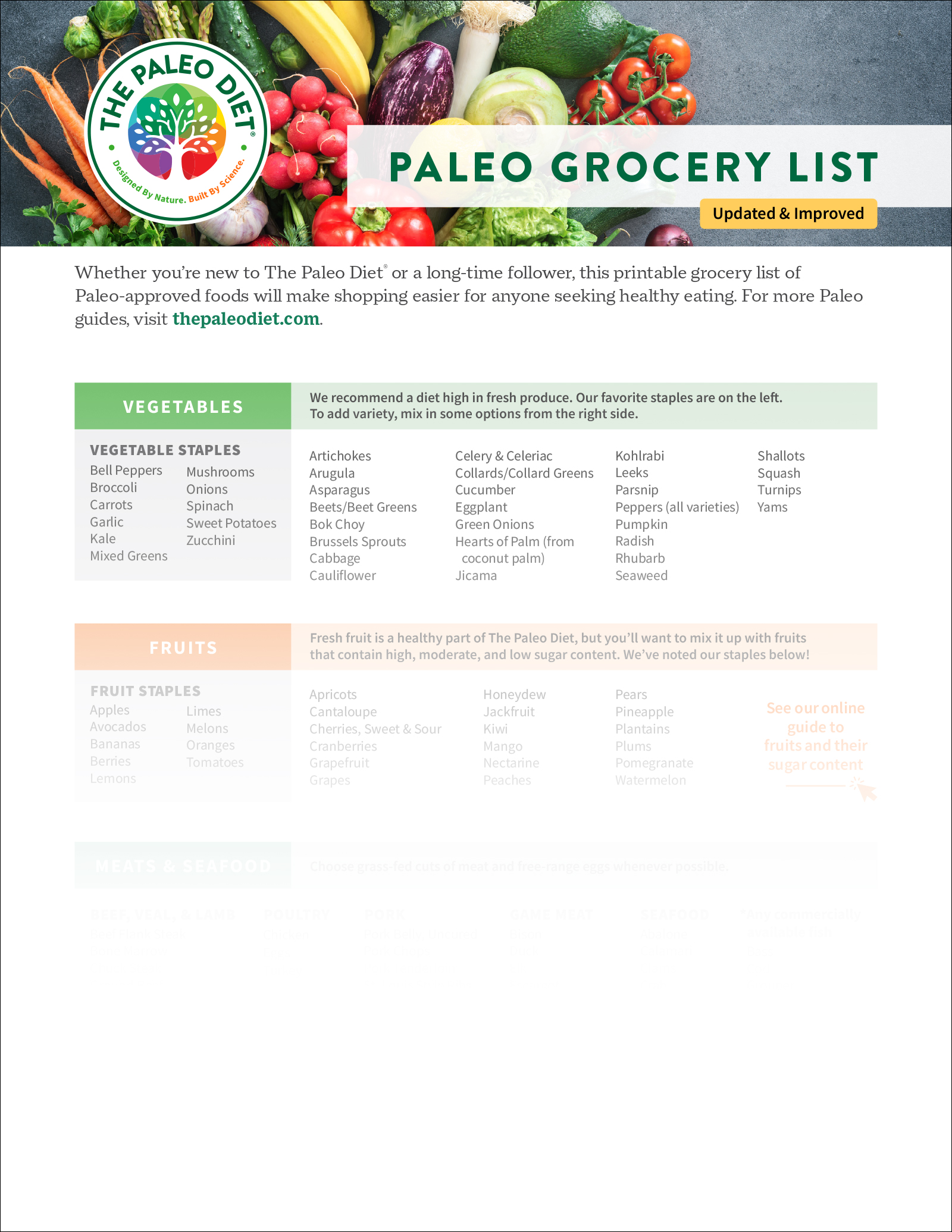What to Know About Rising Grocery Prices

Updated April 11, 2025
As this article was coming together, the think tank Yale Budget Lab reported that President Trump’s recently announced “Liberation Day” tariffs on imported goods, effective April 9, 2025, will raise overall grocery prices by 2.8% and produce prices by 4%.1
Then, just as the send button was nearly pushed at 2:30 MDT on April 9, 2025, President Trump put a 90-day hold on the aforementioned tariffs for 75 countries whose leaders called to negotiate but did not retaliate. The administration agreed to respective tariffs of 10% for the next few months.2
The country that lost out is China, which is currently at a dramatic 145% tariff. Expect retaliatory tariffs on U.S. goods to China for soybeans, pork, beef, and corn. The United States imports most of its apple juice (70%), garlic (80%), vitamin C (90%), and tilapia (78%) from China, along with cod (50%), mushrooms (43%), and tea (30%), according to the Economic Research Service.3
Goods Affected by Recent Tariffs
Though this story is a fast-moving target, we know that you would like to have some ability to plan budgets and know how much your food could cost in the future. We created this summary of what you should know about where your food comes from. If the 10% tariffs are implemented, distributors, grocery stores, and restaurants report that prices will creep up in the next 90 days as the pre-tariff supply chain dwindles. The following is what is known thus far (unless POTUS changes his mind in the meantime):
- According to the United States Department of Agriculture (USDA), Americans consume 17% of imported food and beverages.4 Specific food categories represent a bulk of the imports. For instance, 80% of seafood, 80% of coffee, 59% of fresh fruit, and 35% of vegetables consumed in the U.S. are imported.
- A food tariff can be placed on a whole food, like a fruit or vegetable; a food group, like meat; or an ingredient, like a spice. The Consumer Brands Association wants critical ingredients that must be imported due to scarce availability in this country to be exempt because tariffs will not bring manufacturing of these ingredients back to the U.S.5
- Mexico, Canada, and the European Union are the top three agricultural exporters to the United States. The U.S. has a tariff-free trade agreement with Canada and Mexico, so foods imported from our neighbors to the north and south will not be subjected to tariffs.6 Mexico supplies about one-third of the U.S. with fruit, vegetables, and alcoholic beverages. Canada exports processed food products like baked goods, grains, meat, seafood, vegetable oils, and vegetables. However, energy and potash, two critical components of agriculture, will be subjected to a 10% tariff from Canada and Mexico.7
- South America (led by Brazil, Colombia, and Peru) exports significant amounts of out-of-season fruits and vegetables, sugar, and tropical foods to the United States, so expect prices for the following foods to be higher this winter (unless agreements change by then):8
- Fruits: açaí, avocados, bananas, blueberries, citrus fruits, coconuts, grapes, mangos, melons, papayas, pineapples, plantains, coconuts.
- Vegetables: asparagus, eggplant, peppers (sweet and hot), summer and winter squash, eggplant.
- The tariffs will affect seafood prices because about 80% of the seafood (canned, fresh, frozen, and cured) eaten in the U.S. comes from Canada, Chile, India, Indonesia, and Vietnam. The National Atmospheric Research Association reports that as demand for seafood in this country has increased, the deficit between U.S. exports and imports has grown. Since 1995, U.S. seafood exports have dropped 23% while imports rose 87%.9
- Though this large deficit isn’t likely to reverse anytime soon because even with tariffs, imported seafood is much less expensive than domestic, the Southern Shrimp Alliance (SSA) sees the tariffs as a lifeline.10 The SSA has long called out unfair trade practices that prevent American companies from succeeding, including subsidies from international financial institutions to develop foreign shrimp aquaculture, forced labor, banned antibiotics, and environmental destruction.
- Expect to wake to a more expensive cup of coffee. Since very little coffee can be grown in the United States, the National Coffee Association is calling for a coffee tariff exemption. And, since this country is the world’s second-leading importer of Arabica and Robusta coffee varieties from Asian and Latin American countries, millions of Americans hope the NCA will succeed.11,12 Even so, the coffee industry expects a great deal of price volatility. Stay tuned, coffee drinkers.
RELATED: Coffee Alternatives to Consider on The Paleo Diet®
Lastly, remember that the food industry is on your side. They are advocating and lobbying to try to keep food prices down. To learn more about food tariffs, see this FAQ guide From the Food Marketing Institute.
References
- Where We Stand: The Fiscal, Economic, and Distributional Effects of All U.S. Tariffs Enacted in 2025 Through April 2, accessed April 9, 2025. https://budgetlab.yale.edu/research/where-we-stand-fiscal-economic-and-distributional-effects-all-us-tariffs-enacted-2025-through-april
- Trump suddenly backs off major tariff plan after days of economic and market turmoil, NBC News, April 9, 2025.
- Êconomic Research Service Data, Chinese Food Imports. https://www.ers.usda.gov/topics/international-markets-us-trade/countries-regions/china
- Agricultural Research Service, USDA. Agricultural Imports, updated April 1, 2025. https://www.ers.usda.gov/data-products/ag-and-food-statistics-charting-the-essentials/agricultural-trade#:~:text=The%20leading%20U.S.%20agricultural%20imports,the%20top%20U.S.%20trade%20partners.
- Consumer Brands Association. In Case You Missed It, Consumer Brands Sends a Letter on Tariffs to the President, March 28, 2025. https://consumerbrandsassociation.org/from-the-news/in-case-you-missed-it-consumer-brands-sends-letter-on-tariffs-to-the-white-house/
- U.S., Canadian Mexico Agreement, Trade.gov https://www.trade.gov/usmca
- US tariffs on Mexico and Canada unaffected by 90-day pause, White House official says. Reuters, April 9, 2025.
- Changes in U.S. Agricultural Imports From Latin America and the Caribbean, Economic Research Service. https://www.ers.usda.gov/publications/pub-details?pubid=106971#:~:text=Consumer%2Doriented%20products%20(such%20as,and%20the%20Caribbean%20(LAC)
- Economic Research Service, https://www.ers.usda.gov/data-products/charts-of-note/chart-detail?chartId=108472#:~:text=To%20meet%20rising%20consumer%20demand,India%2C%20Indonesia%2C%20and%20Vietnam
- Trump Administration Imposes 10-46% Duties on Countries Exporting Shrimp to the U.S., Southern Shrimp Alliance, https://shrimpalliance.com/u-s-shrimp-industry-hails-new-tariffs-as-crucial-lifeline/
- Economic Research Service. Latin American Coffee Imports. https://www.ers.usda.gov/data-products/charts-of-note/chart-detail?chartId=110079&ref=thepourover.coffee
- US coffee industry asks Trump administration to exempt product from tariffs, Reuters. https://www.reuters.com/markets/commodities/us-coffee-industry-asks-trump-administration-exempt-product-tariffs-2025-03-14/
Kimberly Lord Stewart
Kimberly Lord Stewart is an author, journalist, and culinary expert. Her work highlights the importance of incorporating whole foods into daily diets and emphasizes the connection between food and overall well-being.
More About The Author




